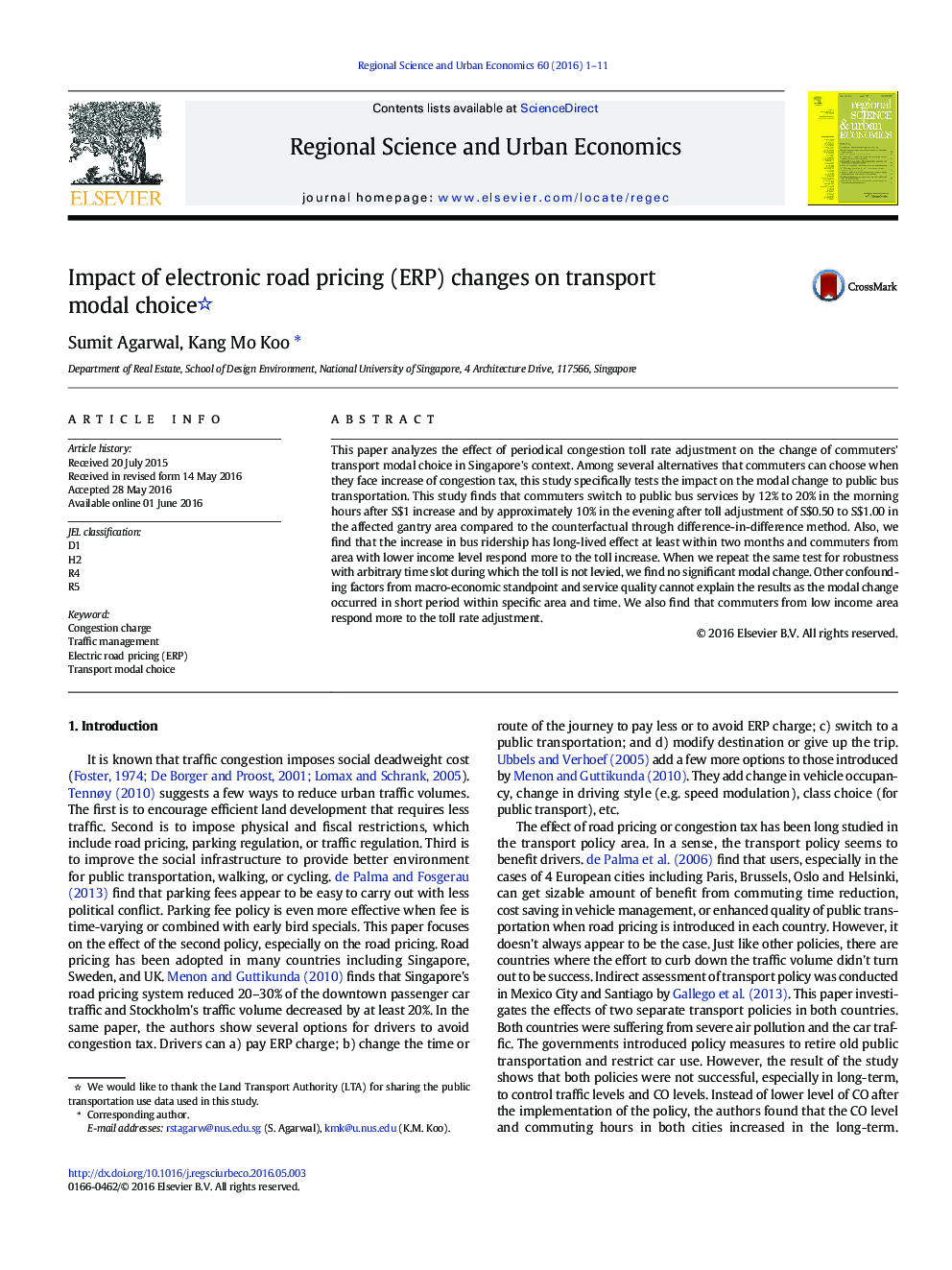| Article ID | Journal | Published Year | Pages | File Type |
|---|---|---|---|---|
| 983623 | Regional Science and Urban Economics | 2016 | 11 Pages |
•Commuters respond to the toll rate increase during peak hours by switching to public bus transportation mode.•The magnitude of transport modal switching is greater in the morning peak hours than in the evening peak hours.•The positive impact on bus ridership does not revert at least within two months.•Commuters from lower income area respond more to the toll rate change.
This paper analyzes the effect of periodical congestion toll rate adjustment on the change of commuters' transport modal choice in Singapore's context. Among several alternatives that commuters can choose when they face increase of congestion tax, this study specifically tests the impact on the modal change to public bus transportation. This study finds that commuters switch to public bus services by 12% to 20% in the morning hours after S$1 increase and by approximately 10% in the evening after toll adjustment of S$0.50 to S$1.00 in the affected gantry area compared to the counterfactual through difference-in-difference method. Also, we find that the increase in bus ridership has long-lived effect at least within two months and commuters from area with lower income level respond more to the toll increase. When we repeat the same test for robustness with arbitrary time slot during which the toll is not levied, we find no significant modal change. Other confounding factors from macro-economic standpoint and service quality cannot explain the results as the modal change occurred in short period within specific area and time. We also find that commuters from low income area respond more to the toll rate adjustment.
